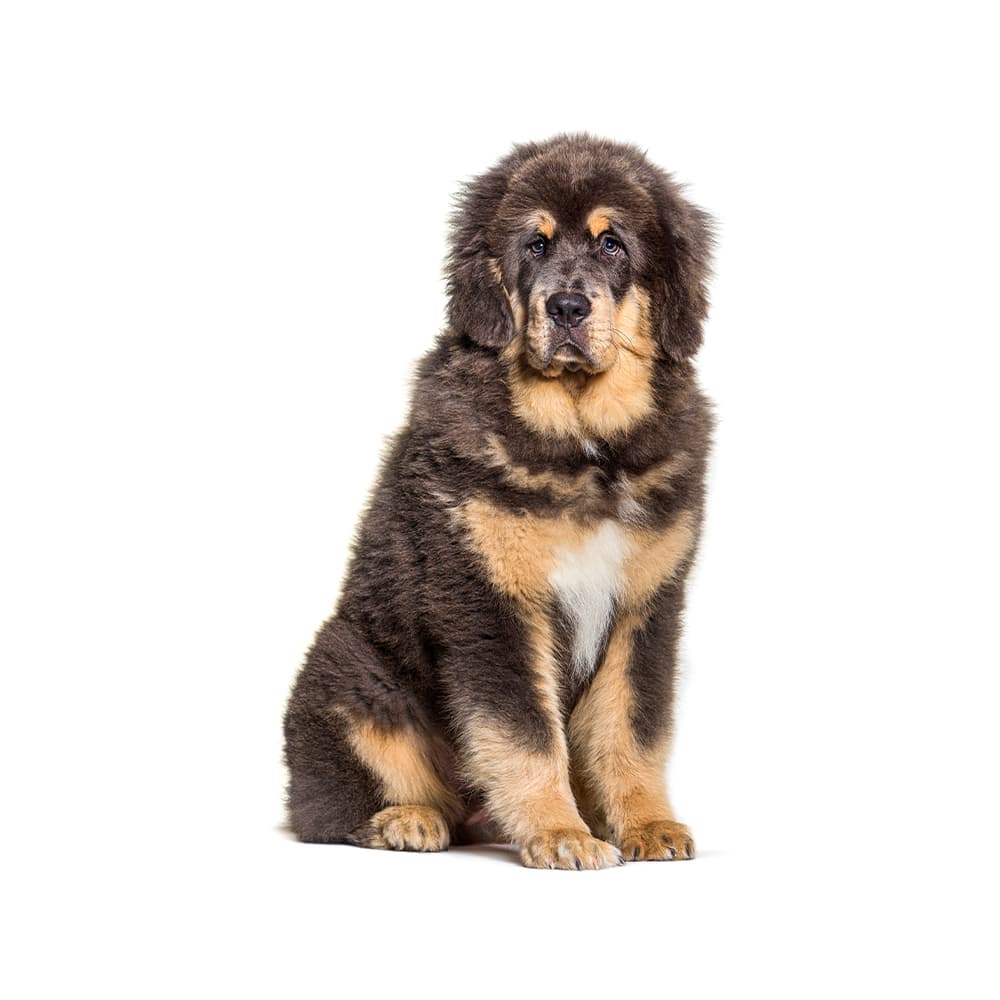Discover your dog's connection to this breed and 200+ others


Discover your dog's connection to this breed and 200+ others



The Tibetan Mastiff, known as Do-Khyi in its native Tibet, is an ancient breed and one of the largest dogs in the world. The origin of the Tibetan Mastiff is unknown, but they are thought to have existed as far back as 1100 B.C. Their primary job was to protect sheep from predators, like wolves, leopards, and bears. Their ferocious and protective nature made them well-suited for this task. Trade along the Silk Road likely brought Tibetan Mastiffs to China, and from there, they spread to other parts of the world. They were considered a ""royal"" breed in China, owned only by the nobility. The breed was introduced to the United States in the 1970s.
Tibetan Mastiffs may suffer from elbow and hip dysplasia, hypothyroidism, eye disorders such as entropion and ectropion. Other conditions may include demyelinative neuropathy and seizures (though the latter not considered prevalent).
Tibetan Mastiffs are great as protectors or sentries due to their strong-will, independence and their territorial nature. They are known for their loyalty and are typically good with their families, including children, but can be wary of strangers. They are intelligent, independent, and can be stubborn at times, which may make training more challenging. However, with consistent, positive reinforcement training, they can learn effectively.
A canine genetic lineage is a group of individuals or entire breeds that descended from common ancestors predating modern breed formation. Often these lineages are associated with a ‘type’ of dog with a unique historical working role and associated behaviors (e.g., herding, scent hunting, etc.).
Spitz and Sled Dogs originate in the Arctic and subarctic regions which caused them the develop adaptations to cold climates. Some of these adaptations give rise to characteristics of the lineage, most notably a dense double coat that helps with insulation. The lineage of these dogs can be followed back to ancient breeds developed by Indigenous people. These ancient breeds were used as an aid for transportation, herding, guarding, and hunting. These jobs have created dogs that are independent, intelligent and have strong work ethics as well as a sturdy body that helps them to pull sleds or go on long journeys over rough terrain.
Example breeds with ancestry from this lineage include Akita, Chow Chow, and Siberian Husky.
A Tibetan Mastiff puppy held the record for being the most expensive dog ever sold, purchased for a staggering $2 million in China in 2014.
Despite their large size and protective nature, Tibetan Mastiffs can be quite gentle and patient with children in their own family.
They are known to be "night barkers" if left outside, a behavior that harkens back to their days of watching over flocks at night in Tibet.
https://www.akc.org/dog-breeds/tibetan-mastiff/
https://www.petmd.com/dog/breeds/c_dg_tibetan_mastiff
https://www.ukcdogs.com/tibetan-mastiff
https://www.fci.be/en/nomenclature/TIBETAN-MASTIFF-230.html
Recommended by top vets with decades of experience
21 breeds
64 genetic health markers
50 genetic trait markers
